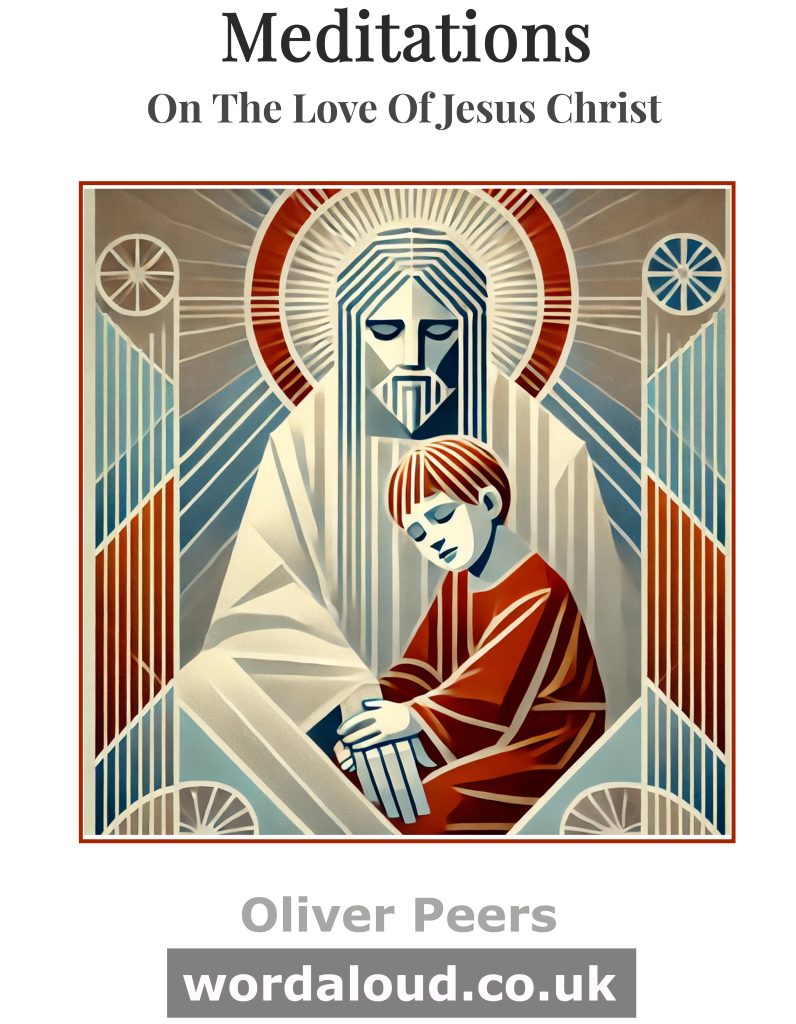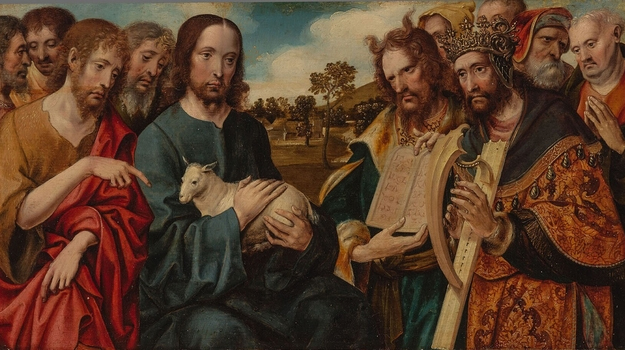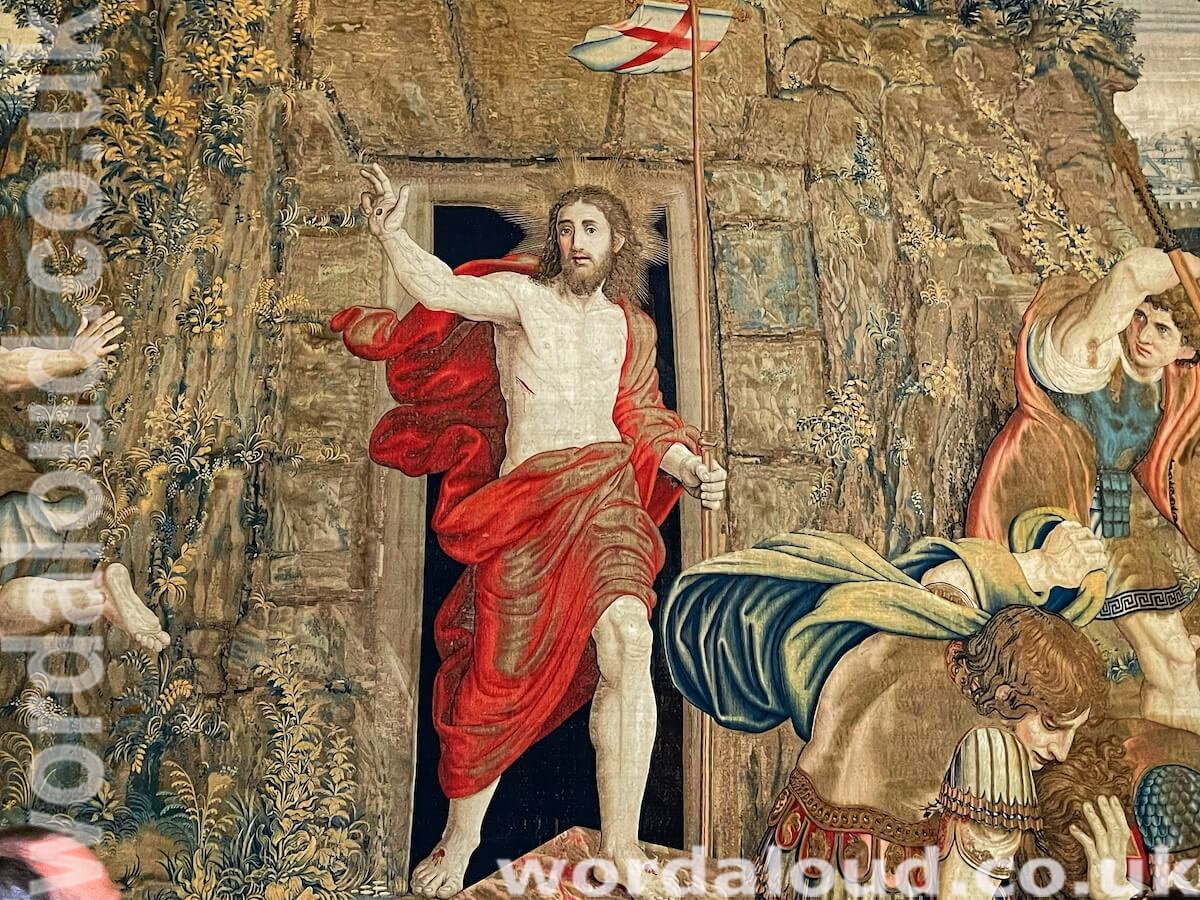Christian Art | Demoniacs In The Country Of The Gergesenes
Matthew 8: 28-34 – Week 13 Ordinary Time, Wednesday (King James Audio Bible KJV, Spoken Word)
28 ¶ And when he was come to the other side into the country of the Gergesenes, there met him two possessed with devils, coming out of the tombs, exceeding fierce, so that no man might pass by that way.
29 And, behold, they cried out, saying, What have we to do with thee, Jesus, thou Son of God? art thou come hither to torment us before the time?
30 And there was a good way off from them an herd of many swine feeding.
31 So the devils besought him, saying, If thou cast us out, suffer us to go away into the herd of swine.
32 And he said unto them, Go. And when they were come out, they went into the herd of swine: and, behold, the whole herd of swine ran violently down a steep place into the sea, and perished in the waters.
33 And they that kept them fled, and went their ways into the city, and told every thing, and what was befallen to the possessed of the devils.
34 And, behold, the whole city came out to meet Jesus: and when they saw him, they besought him that he would depart out of their coasts.
Jesus has crossed the Sea of Galilee, entering into Gentile territory. The King James Version speaks of the country of the Gergesenes, however ‘Gaderenes’ or ‘Gerasenes’ are more usually spoken of in other ancient sources. The two main towns in the area were Gerasa and Gadara. The events reported in these Gospel verses could have happened close to both of the towns.
As Jesus demonstrates his power over Satan, there is a strong sense in these verses of the universality of Christ’s saving teaching and gift of himself for our salvation. This is quite alien territory. The presence of the herd of swine, an unclean animal for the Jews, serves to emphasize this. We may think of the region as being composed of different cultural groups living in relative proximity, yet separately, with suspicion and animosity characterizing any mutual relationships. It is too a threatening space. The two men possessed by devils are extremely fierce, such that no-one was able to come near them.
Jesus, though, moves freely all around the regions of Galilee. There is an opening up of space, such as is found by all who follow Jesus, together with the conquest of evil. The demons recognize Jesus’ power and authority. They are impotent in Jesus’ presence, only able to beg Jesus to be cast into the herd of swine. The two evils of the demons and of the unclean animals are thereby expelled from the scene. From a Jewish perspective, the space is cleansed. The healing miracle is not so perceived by those of the city. They come to meet Jesus, as a multitude encountering something strange, and they beg him to go away. They see a threat to their livelihood, which prevents them from hoping for salvation in Jesus. We are aware of those who alienate themselves from Christian faith.
See also: Mark 5-17 | The Man Possessed by Devils and the Herd of Swine | In the Country of the Gadarenes
Miracle | Prayer | Healing

Concluding Prayer
Lord, holy Father, faithful to your promise,
you sent your Spirit
to bring together a people divided by sin.
Give us grace to foster unity and peace among men.
Through Christ our Lord.
King James Audio Bible | Endnotes
The Devils Know Who Jesus Is
In Matthew 8:28-34, we read about an encounter between Jesus and two demon-possessed men. These men were so consumed by evil spirits that they were living among the tombs, frightening those who passed by. When Jesus arrived, the demons recognized Jesus immediately and cried out: ‘What have we to do with thee, Jesus, thou Son of God? art thou come hither to torment us before the time?’ (Matthew 8:29)
The demons knew exactly who Jesus was, referring to Him as ‘the Son of God’. In the Bible, we see that demons recognize and fear the power of God. James 2:19 says: ‘Thou believest that there is one God; thou doest well: the devils also believe, and tremble.’
The fact that the demons knew Jesus’ identity is a testament to Jesus’ power and authority. Jesus didn’t need to announce who he was or demonstrate his power to these demons; they already knew him.
Christians have reflected on the significance of the demons’ recognition of Jesus. Saint Augustine of Hippo, prominent theologian in the early church, wrote: ‘The demons believe, and tremble, and do not deny; they know Christ, and acknowledge Him to be the Son of God.’ Augustine’s words echo James’ statement that demons believe in God and recognize Jesus’ authority.
In more recent times, Protestant theologian J.I. Packer wrote in his book, Knowing God: ‘The demons believe that Jesus is the Christ, the Son of God, and tremble at the thought.’ Packer emphasizes the power of Jesus’ identity, noting that even demons are afraid of Him.
The demons’ recognition of Jesus highlights the spiritual battle that Christians face. As Ephesians 6:12 says: ‘For we wrestle not against flesh and blood, but against principalities, against powers, against the rulers of the darkness of this world, against spiritual wickedness in high places.’ The demonic possession of the two men in Matthew 8 is a vivid example of the reality of spiritual warfare.
The story demonstrates Jesus’ power over evil. Jesus commands the demons to leave the men, and they obey him. The men are completely transformed, no longer living among the tombs but rather sitting at Jesus’ feet, clothed and in their right minds.
The encounter with the demon-possessed men raises questions about the nature of evil and the role of demons in the world. While some have attributed demonic possession to mental illness, others maintain that there is a supernatural element at play. C.S. Lewis, a prominent Christian author, wrote in his wonderful book The Screwtape Letters: ‘There are two equal and opposite errors into which our race can fall about the devils. One is to disbelieve in their existence. The other is to believe, and to feel an excessive and unhealthy interest in them.’








